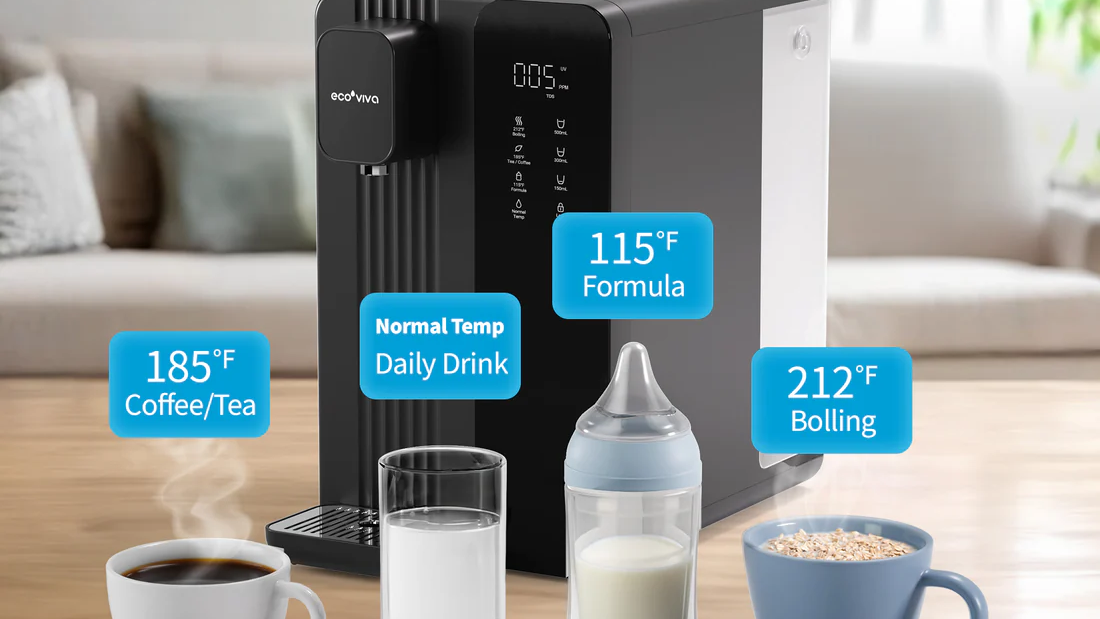Reverse osmosis (RO) systems offer a fully developed water purification solution fitting for household and commercial applications. A Reverse Osmosis Water Filter uses a multi-stage filtration method to cast away contaminants more successfully than less simple methods like refrigerator filters, under-sink carbon filters, or water pitcher filters. The number and type of stages in an RO system allow for customization to achieve the desired water quality.
Why Different Stages Matter
The number of stages in an RO system affects the quality dealt with water, system size, maintenance requirements, and cost included. More stages normally imply higher water quality. For example, a 5-stage system may have an extra carbon filter than a 3-stage system, which assists in removing more chlorine, chloramines, and different impurities. Some systems additionally have remineralization cartridges to feature beneficial minerals back into the water, improving flavor and dietary value.
Here’s a breakdown:
- Water Quality: More stages typically suggest better water quality. A 5-stage system consists of additional carbon filters, resulting in extra powerful chlorine, chloramine, and odor elimination as compared to a 3-stage or 4-stage system.
- Customization: Some stages can add beneficial minerals back to the water, like remineralization cartridges, enhancing its flavor and supplying essential nourishment.
- System Size and Cost: The number of stages impacts the system’s size, maintenance required, and costs included. Larger systems may require extra space and have higher replacement fees.
Choosing the Right Number of Stages
When choosing an RO system, remember factors that include the number of filtration stages, available area, unique features (like remineralization cartridges or permeate pumps), and the value of substitute cartridges. Systems with more stages typically provide higher water quality but may additionally require extra area and have higher maintenance charges because of the need for more filter replacements.
When selecting an RO system, consider these factors:
- Desired Water Quality: If you prioritize exceptional water purity and want to remove a wide range of contaminants, a system with more stages might be ideal.
- Space Constraints: Ensure the system will fit under your sink or in your designated area.
- Additional Features: If you want features like remineralization or a permeate pump, check if they’re available in the desired number of stages.
- Replacement Costs: More stages often mean more filters to replace, affecting long-term costs.
Common RO System Configurations
- 3-Stage: Typically includes a sediment prefilter, carbon prefilter, and RO membrane.
- 4-Stage: Often adds a second carbon prefilter or a remineralization postfilter.
- 5-Stage: This may include an additional carbon prefilter or remineralization cartridge.
Understanding the Stages
- Sediment Prefilter: This removes any dirt, sand, and other particles.
- Carbon Prefilter: This casts off chlorine, chloramines, and bad odors.
- RO Membrane: This sheds dissolved solids including arsenic, lead, radium, and many more.
- Polishing Carbon Postfilter: Improves water taste and clarity.
- Remineralization Cartridge: Adds back minerals removed by the RO membrane.
3-Stage Reverse Osmosis Systems
3-Stage RO consists of a carbon prefilter, a sediment prefilter, and an RO membrane. The sediment prefilter casts away dust and particles, whereas the carbon prefilter reduces chlorine and different impurities that could impact water taste and odor. The RO membrane is the core of the system, filtering out dissolved solids like lead, arsenic, and radium. Some 3-stage systems also feature a polishing carbon postfilter to further enhance water clarity and taste.
4-Stage Reverse Osmosis Systems
A typical 4-stage RO system adds an extra layer of filtration. In addition to the sediment prefilter, carbon prefilter, and RO membrane, a polishing carbon postfilter is included to ensure the water is crystal clear. Some 4-stage systems replace the polishing filter with a remineralization cartridge, which reintroduces beneficial minerals eliminated throughout filtration. This addition improves the taste and dietary nutrients of the water, making it a popular desire for those who need more quality water.
5-Stage Reverse Osmosis Systems
A 5-stage RO machine usually includes a sediment prefilter, two carbon prefilters, an RO membrane, and a polishing carbon postfilter. This configuration affords multiple layers of filtration, which is right for putting off an extensive layer of contaminants. Some 5-stage systems may also feature a remineralization cartridge as the final stage, adding minerals back into the water for better taste and health benefits.
Conclusion
Regular maintenance is vital for keeping an RO system functioning correctly. The sediment and carbon filters ought to be replaced annually to make certain they hold to dispose of debris and chemical substances successfully. The RO membrane generally lasts 2 to 3 years, depending on water quality and utilization. If the system consists of a remineralization cartridge, it needs to be replaced twice a year to keep standard mineral stages within the water.
By understanding the different stages and configurations of reverse osmosis systems, consumers can choose the right system to meet their water quality needs while managing maintenance and costs effectively.

